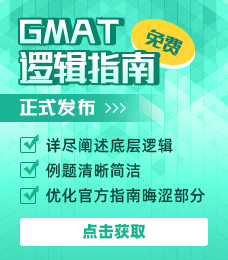From 2013, students applying to business school will have to sit a new admissions test—an updated version of the Graduate Management Admissions Test (GMAT). Below, the body responsible for administering the test, The Graduate Management Admission Council (GMAC), explains what will change.
The new test, known as “Next Generation GMAT”, is a response to changes in the business marketplace and in the needs and interests of students. These include more specialised masters programmes and more variations on the traditional MBA. Schools have also revised and continue to review their curricula to better match the needs of employers and an increasingly diverse range of students with different ambitions, backgrounds and learning styles.
The Next Generation GMAT, due for completion in 2013, will build on the foundation of the existing test, but will incorporate advances in testing technology and science. It will provide a more precise measures of the skills needed for both traditional MBA and new business programmes.
Developing the new test will involve three phases over the next five years: skills research, pilot testing and operational readiness. Throughout each phase, GMAC will seek feedback from key school professionals, including faculty, admissions officers and programme directors.
Phase one: skills research
GMAC is currently identifying and reviewing potential new skills that the GMAT could measure. Faculty members from leading business schools around the world are being recruited to review and rate the importance of various skills and make recommendations for change based on new expectations of students.
Phase two: pilot testing
During this phase, new questions will be piloted with GMAT test takers to determine the correct proportion of new questions on the exam and the impact of the questions on the testing experience. New score scales may be developed in collaboration with school admissions professionals, who will also review the design of the score report. Once a sufficient bank of questions has been developed, GMAC will field test the Next Generation GMAT and then finalise its blueprint.
Phase three: operational readiness
Before launching the new test, GMAC will ensure that it is easily accessible to all test takers and that test centres are upgraded as needed. New test preparation materials will be developed and made available to candidates before the first new tests are delivered.
The final result
What will the Next Generation GMAT look like? Will it be more difficult? Will there be more or fewer questions, perhaps in a different format? Numerous options are currently being identified, reviewed and measured—and GMAC is committed to conducting thorough review and testing at each step in order to deliver a successful Next Generation GMAT that will meet the needs of business schools and students well into the future.
Background
The GMAT was created in 1953 by nine business schools as their personal test to evaluate and admit the best students for their programmes. Five decades of research and continuous improvement have proven the GMAT to be the most reliable indicator of academic success in graduate management education. Today, it is used by almost 5,000 programmes in 1,900 schools.
In 2008, more than 250,000 prospective business students took the GMAT exam in more than 90 countries. The reach and stature of this computer-adaptive exam reflect its ability to help quality schools find the students around the world who are the best match for their programmes and for the demands of the marketplace. The process of continually reviewing and revising the exam is a rigorous one. An international panel thoroughly studies each potential new question before it is pilot tested with candidates who represent the diversity of the GMAT test taking pool. Questions are carefully screened to ensure they are bias-free.
This article was based on a submission by The Graduate Management Admission Council.
HAVE YOUR SAY: How do you think the GMAT could be improved? What does a modern-day business school test need to measure. Leave your thoughts below.






 发表于 2009-3-18 03:17:00
发表于 2009-3-18 03:17:00





 楼主
楼主
 京公网安备11010202008513号
京公网安备11010202008513号